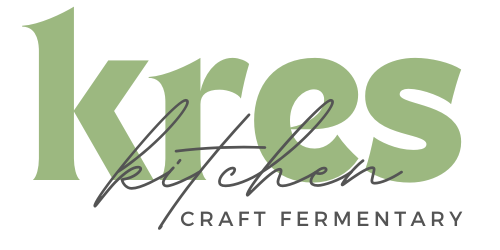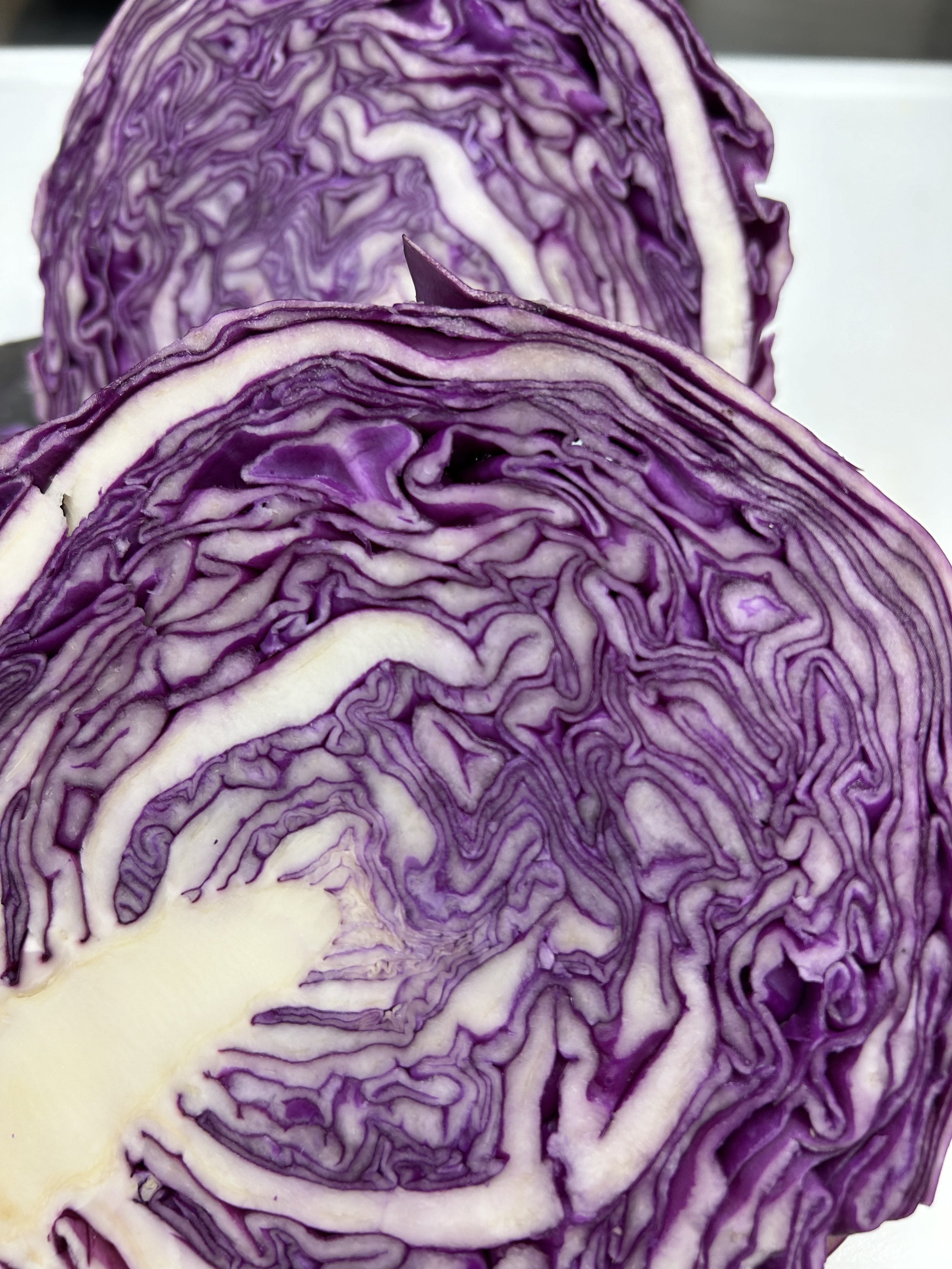Cabbage!
I started growing cabbage for the health paybacks long before I started growing for the probiotics and the complex flavors of fermentation. Of course, these drivers eventually unite, like magnets and steel. The antioxidant and anticancer benefits of cabbage are well-known. What is less commonly understood is that not all cabbage offers the same antioxidant punch. These nutritional benefits are endowed by the metabolite composition of the plant which can vary greatly depending on variety, growing conditions and the grower’s techniques.
Furthermore, studies have shown an important correlation between ANTIOXIDANT density (such as total concentration of cabbage glucosinolates and isothiocyanates) and FLAVOR. For this reason, I spend as much time on improving cabbage cultivation as I do on processing and fermenting into quality sauerkrauts. Flavor is the ultimate signal, and we’re paying very close attention.
Just like a store-bought tomato cannot compete with homegrown heirlooms, the flavor profile of all vegetables follow cultivation patterns. I’m frequently approached at the markets by folks interested making their own sauerkraut. These are my people; I welcome their questions and always take the time to help them out if I can. Can you guess where I start? You got it — by encouraging them to purchase cabbage (and other ingredients) from local regenerative or organic farmers. Even better, consider growing themselves. Higher-quality plants grown in healthy living soil + less exposure to synthetic fertilizers and pesticides + shorter time from harvest to fermentation = better outcomes. All of these variables contribute to a better tasting, and more nourishing, ferment. Period.
Growing and fermenting cannot be disconnected.
Our cultivation plan improves every year, in part, by focusing on cabbage varieties that contribute the most to flavor and texture. The importance of addressing soil quality from the outset cannot be understated. A heavy feeder, I find that cabbage seedlings do best when started in living soil. This accelerates nature’s 24x7 fertilization process called nutrient cycling — a self-governing feeding system for plants that takes the grower out of the process so nature can do her thing. Efficient nutrient cycling allows plants to “call-up” the precise nutrient they need, when they need it — the soil food web delivers. We start ‘em out young!
And we’re making good progress…
Total yield is important but as a health-conscious grower/producer there’s so much more. From our POV, the fundamental goal of cultivation is to positively influence cabbage plants’ metabolite composition for a more nutrient-dense fermentation. To achieve this, there are a few steps to take on the grow side.
The main ones:
Find and test for the best cabbage varieties for our climate and application.
Build-up soil quality and soil food web populations (compost).
Optimize environmental factors such as light exposure (choosing the right bed location), temperature (getting planting dates right), and water (efficient irrigation for managing through dry periods with little rainfall).
Skip synthetic chemicals all together.
Mulch rows with natural materials (wood chips, straw, leaves) to protect soil surfaces and to retain moisture.
Our annual cycle starts every spring with seed selection and seedling starts. By the time we harvest and start processing in the commercial kitchen the decks are stacked - total antioxidant content, flavor profile, and the wild fermentative ecology are essentially locked-in. Nothing we do on the processing side will measurably change these attributes. So, it is my fundamental belief that Kres’s cultivation techniques and soil quality matter just as much as our sauerkraut recipes and fermentation methods. Grower and Fermenter!
And here’s the coolest thing: if you’re a home grower interested in kraut fermentation, you can achieve very similar farm-to-ferment outcomes that we achieve. Start by getting your soil right, experiment with seed varieties, and pay attention to the environmental factors that influence your growing conditions. Correct problems, make steady improvements… and reap the rewards. You will be amazed at the results!
Kraut on!
References:
Effect of cruciferous vegetables on lung cancer in patients stratified by genetic status: a mendelian randomisation approach. doi: 10.1016/S0140-6736(05)67628-3.
Cruciferous Vegetable Intake Is Inversely Associated with Lung Cancer Risk among Current Nonsmoking Men in the Japan Public Health Center (JPHC) Study. doi: 10.3945/jn.117.247494
Plant polyphenols as dietary antioxidants in human health and disease. doi: 10.4161/oxim.2.5.9498
Analysis of Primary Metabolites in Cabbage (Brassica oleracea var. capitata) Varieties Correlated with Antioxidant Activity and Taste Attributes by Metabolic Profiling. doi: 10.3390/molecules24234282
© 2025 Kres Kitchen LLC. All rights reserved.












